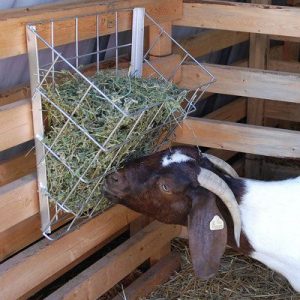Setting up a goat farm can be a rewarding venture, whether you’re looking to produce milk, meat, or simply enjoy the companionship of these charming animals. However, it requires careful planning and knowledge to ensure the health and productivity of your goats.
1. Research and Planning
- Understanding Goat Farming
Before diving into goat farming, familiarize yourself with the basics. Read books, join online forums, attend local agricultural workshops, and, if possible, visit established goat farms. Understanding the various aspects of goat farming—such as breeds, feeding, healthcare, and housing—will give you a solid foundation.

- Defining Your Goals
Determine the primary purpose of your goat farm. Are you interested in dairy, meat production, fiber (like cashmere or mohair), or breeding? Your goals will influence your decisions on breed selection, farm layout, and management practices.
2. Choosing the Right Breed
- Dairy Breeds
- Saanen: Known for high milk production and calm temperament.
- Alpine: Adaptable and hardy, with good milk yield.
- Nubian: Produces rich, creamy milk but has lower overall yield compared to Saanen and Alpine.

- Meat Breeds

- Fiber Breeds

Just to mention, you should Note that our company can help you to start by giving you all the necessary information you need to get started if not yet in the business. Please check our online shop, we have all the standard business proposals for different capacities at very a cheap price made by the best agricultural specialists as well as Standard design plans that are made by the best agricultural architects around the globe. please visit our online shop now using the links below to witness by yourself
Design plans (FARM HOUSE DESIGNS – Kimd Construction & Farm Consultants)
Business plans (BUSINESS PLANS & PROPOSALS – Kimd Construction & Farm Consultants)
Welcome back from visiting our shop, hope you have placed your order for any of our products or you can place it after navigating more of our informative articles.
So let’s continue with our article!
3. Acquiring Land and Building Infrastructure
- Land Requirements
Choose a location with sufficient space for grazing and future expansion. A general guideline is to have at least 1 to 2 acres of pasture per 10 goats, but this varies based on the quality of forage available.
- Fencing
Goats are notorious escape artists. Invest in sturdy, tall fencing (at least 4-5 feet high) to keep them contained and protected from predators. Electric fencing can be an additional deterrent.

- Shelter
Goats need a dry, draft-free shelter to protect them from extreme weather. A simple three-sided structure with a roof can suffice. Ensure the shelter has proper ventilation and is easy to clean. Plan for about 15-20 square feet per goat.
- Feeding and Watering Stations
Install feed troughs and waterers that are accessible and easy to clean. Automatic waterers can save time and ensure goats always have fresh water.
4. Nutrition and Feeding
- Forage and Pasture Management
Goats thrive on a varied diet of grasses, shrubs, and leaves. Implement rotational grazing to maintain pasture health and reduce parasite load. Divide your pasture into sections and rotate goats every few weeks.

- Supplemental Feeding
Provide high-quality hay during winter or drought periods when pasture is not available. Goats also need a balanced diet including grains, minerals, and salt. Consult a livestock nutritionist to create a balanced feeding plan.
5. Health and Veterinary Care
- Preventive Care
Establish a relationship with a local veterinarian experienced in goat care. Implement a regular vaccination and deworming schedule. Common vaccines include CDT (for Clostridium and tetanus) and pneumonia vaccines.
Perform regular health checks on your goats to monitor for signs of illness or injury. Check their body condition, hooves, eyes, and coat. Learn to recognize symptoms of common goat diseases such as bloat, mastitis, and parasites.

- Hoof Care
Trim goat hooves every 4-6 weeks to prevent overgrowth and hoof-related issues. Proper hoof care is essential for preventing lameness and infections.
6. Breeding and Kidding
- Breeding Plan
Decide whether you want to breed your goats or purchase kids. If breeding, plan the breeding schedule to ensure kidding occurs in favorable weather conditions. Understand the breeding cycle and gestation period (about 150 days).

- Kidding Preparation
Prepare a clean, comfortable kidding area. Have essential supplies ready, such as clean towels, iodine for umbilical cords, and a heat lamp if needed. Learn to recognize signs of labor and basic kidding assistance.
7. Financial Planning and Marketing
- Initial Investment
Create a detailed budget for initial setup costs, including land, fencing, shelter, feed, and goats. Consider ongoing expenses such as feed, veterinary care, and labor.
- Revenue Streams
Identify potential revenue streams based on your farm’s goals. Dairy farms can sell milk, cheese, and yogurt, while meat farms can sell live goats or processed meat. Fiber farms can sell raw fiber or finished products like yarn.
- Marketing Strategy
Develop a marketing plan to reach your target customers. Use social media, local farmers’ markets, and farm tours to promote your products. Building a strong brand and customer base is key to a successful goat farming business.
Conclusion
Starting a goat farm requires thorough planning and dedication, but with the right knowledge and resources, it can be a fulfilling and profitable venture. By carefully selecting your breed, setting up appropriate infrastructure, ensuring proper nutrition and healthcare, and planning for breeding and marketing, you can set the foundation for a thriving goat farm. Remember, the key to success in goat farming lies in continuous learning and adaptation to meet the needs of your goats and the market. Happy farming!
Sharing is caring!




